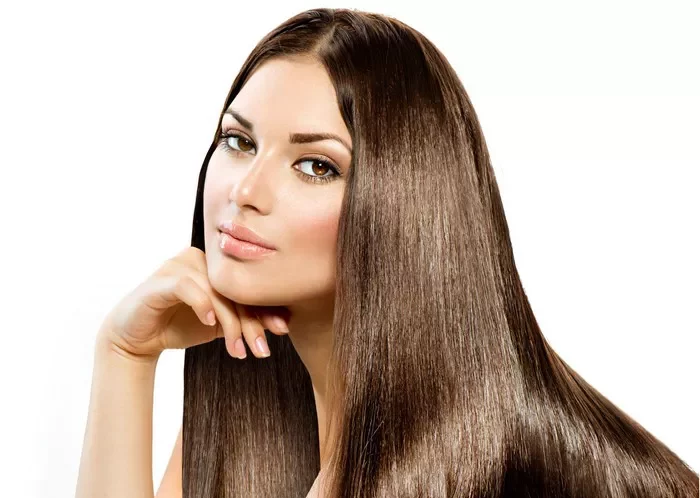Split ends are a common hair woe that can afflict anyone, regardless of hair type or texture. These pesky split ends occur when the protective outer layer of the hair cuticle becomes damaged or wears away, causing the hair to split into two or more strands. Not only do split ends make your hair look frizzy and unkempt, but they can also lead to further damage and breakage if left untreated. Fortunately, there are several steps you can take to repair split ends and prevent them from recurring. In this comprehensive guide, we’ll explore the causes of split ends, effective methods for treating them, and strategies for maintaining healthy, split-end-free hair.
Understanding Split Ends: Causes and Types
Before delving into solutions, it’s important to understand what causes split ends and the different types that exist. Split ends typically occur as a result of:
1. Mechanical Damage: Excessive brushing, combing, or styling with heat tools can weaken the hair shaft and cause it to split.
2. Chemical Damage: Overprocessing hair with dyes, bleach, perms, or relaxers can strip the hair of its natural oils and weaken the cuticle, leading to split ends.
3. Environmental Damage: Exposure to harsh weather conditions, such as sun, wind, and extreme temperatures, can damage the hair cuticle and contribute to split ends.
4. Poor Hair Care Practices: Using harsh hair products, frequent washing with hot water, and rough towel-drying can all contribute to split ends.
Split ends can manifest in various forms, including:
- Classic Split: The hair shaft splits into two separate strands at the end.
- Double Split: The hair shaft splits into multiple strands, resembling a “Y” shape.
- Feather Split: The hair splits into several small strands, giving it a frayed appearance.
Effective Strategies for Treating Split Ends
While it’s impossible to repair split ends completely, there are several strategies you can employ to minimize their appearance and prevent further damage:
1. Trimming: The most effective way to get rid of split ends is to trim them off. Regular trims every 6-8 weeks can help prevent split ends from traveling up the hair shaft and causing more damage.
2. Deep Conditioning: Moisture is key to keeping hair healthy and preventing split ends. Incorporate a weekly deep conditioning treatment into your hair care routine to nourish and hydrate the hair shaft.
3. Protective Styling: Minimize heat and mechanical damage by opting for protective hairstyles that don’t require excessive styling or manipulation. Braids, buns, and twists can help shield your hair from environmental stressors.
4. Heat Protection: If you must use heat styling tools, always apply a heat protectant spray or serum to shield your hair from high temperatures. Additionally, use the lowest heat setting possible and avoid prolonged exposure to heat.
5. Gentle Handling: Be gentle with your hair when brushing, combing, and towel-drying. Use a wide-tooth comb to detangle wet hair, and pat your hair dry with a soft towel instead of rubbing it vigorously.
6. Avoiding Overprocessing: Limit the use of chemical treatments and harsh hair products that can strip the hair of its natural oils and weaken the cuticle. If you must color or chemically treat your hair, opt for gentle, ammonia-free formulas.
7. Protective Products: Incorporate leave-in conditioners, serums, and oils into your hair care routine to provide an extra layer of protection against environmental damage and keep your hair moisturized.
8. Healthy Lifestyle Habits: Maintain a balanced diet rich in vitamins, minerals, and protein to support overall hair health. Stay hydrated, exercise regularly, and minimize stress, as these factors can also impact the condition of your hair.
Preventative Measures for Split End Prevention
While treating existing split ends is essential, taking proactive measures to prevent them from occurring in the first place is equally important:
1. Regular Trims: Schedule regular haircuts every 6-8 weeks to remove any split ends and prevent them from traveling up the hair shaft.
2. Protective Styling: Embrace protective hairstyles that minimize stress and manipulation on the hair, especially during periods of extreme weather or environmental exposure.
3. Low-Manipulation Hairstyles: Opt for hairstyles that require minimal styling and manipulation to reduce the risk of mechanical damage and breakage.
4. Silk Pillowcases: Switching to a silk or satin pillowcase can help reduce friction and prevent damage to the hair cuticle while you sleep.
5. Avoiding Overwashing: Wash your hair no more than 2-3 times per week to prevent stripping away natural oils that keep the hair hydrated and protected.
6. UV Protection: Wear a hat or use hair products with UV filters to shield your hair from the damaging effects of the sun’s rays.
7. Avoiding Tight Hairstyles: Avoid tight ponytails, braids, or buns that can pull on the hair shaft and cause breakage.
8. Regular Conditioning: Incorporate a leave-in conditioner or hair mask into your routine to keep your hair hydrated and resilient against environmental damage.
Conclusion
While split ends may seem like an inevitable consequence of daily wear and tear on your hair, they are entirely manageable with the right care and maintenance routine. By understanding the causes of split ends and implementing effective treatment and prevention strategies, you can keep your hair looking healthy, vibrant, and split-end-free. Remember to prioritize gentle handling, regular trims, and moisture-rich products to keep your locks in optimal condition. With patience and consistency, you can say goodbye to split ends and hello to luscious, healthy hair.


